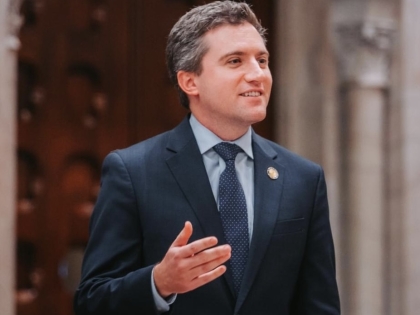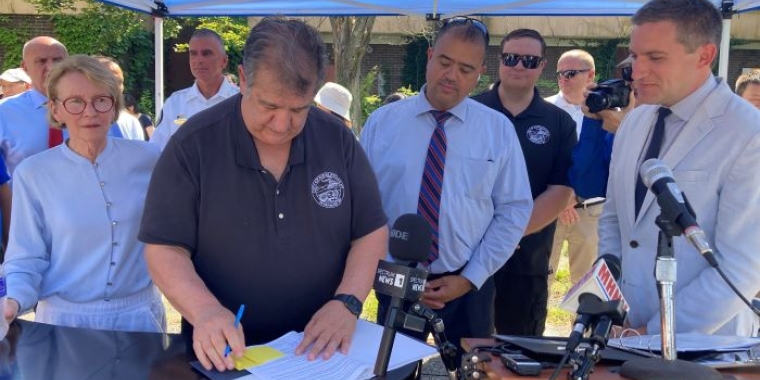
Orange County residents could get toll discount for Cuomo Bridge

State Sen. James Skoufis is calling for Orange County residents to be added to a toll discount program for crossing the Gov. Mario M. Cuomo Bridge to offset fares they could incur under the Metropolitan Transportation Authority’s plan to charge $15 to enter midtown and lower Manhattan known as congestion pricing.
The Cornwall Democrat announced that the plan will be part of the state Senate’s budget proposal expected to be released later on Monday.
Under his proposal, Orange County residents would join the program already in place for Rockland and Westchester county residents, which offers a 20 percent reduced toll rate. It would only apply to E-ZPass holders with Orange County addresses connected to their accounts, Skoufis said during a news conference Monday morning at his office.
The bridge’s toll increased by 50 cents at the beginning of this year to $6.25 for E-ZPass holders as part of a systemwide plan to increase fares on the Thruway. It will continue to increase through 2027 up to $7.75. A residential discount allows Rockland and Westchester residents to pay just $5 to cross. When the increases are fully phased in, residents who qualify for the discount program will pay $6.20 — a $1.55 differential, according to Skoufis.
Skoufis told reporters that state Senate Majority Leader Andrea Stewart-Cousins has committed to making his proposal a priority during budget negotiations. He said he has not discussed it with Gov. Kathy Hochul yet but is optimistic it will be included in the final version of the budget. The plan is expected to cost the state $3 million.
“This would be a significant saver for especially individuals and families that use the bridge regularly, but even for the senior citizen or family that makes the occasional trip into the city to see a Broadway show, to catch meetings, to see friends and family,” Skoufis said.
The MTA’s plan resulted from recommendations the agency approved in December as part of a fare program developed by the Traffic Mobility Review Board, a New York state body charged with advising the MTA on the tolls. The MTA’s vote on the recommendations didn’t put the program into full effect but moved it closer to reality by kicking off a public review process.
The plan would place a base fare of $15 on cars traveling south of 60th Street in Manhattan — an area being referred to as the Central Business District, which includes some of New York City’s busiest streets. It would be the first of its kind in the United States. Hochul supports the plan and has said it will make New York City a global leader in transportation policy by lowering emissions and easing gridlock.
There would be discounts for travel between 9 p.m. and 5 a.m. and for frequent low-income drivers, and commuters who pay Lincoln Tunnel and Holland Tunnel tolls would get a reduced fee. But it does not include discounts for the George Washington, Robert F. Kennedy and Henry Hudson bridges — paid crossings that don’t directly enter the proposed toll zone and which are heavily used by commuters north of Manhattan.
Skoufis has been vocal about his concerns that the congestion pricing proposal would disproportionately affect Orange County residents who do not have many public transportation alternatives to driving into Manhattan. Last month, Skoufis and several other Hudson Valley state lawmakers representing Orange County signed onto a federal lawsuit filed by the United Federation of Teachers that seeks to block the MTA’s proposal.
The situation is different east of the Hudson River, Skoufis said, where double-tracks allow for two-way train travel and more frequent service.



